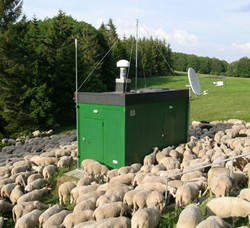 In devouring the weekend’s reports regarding North Korea’s latest atomic machinations, we were struck by the technological limits of the global monitoring system. Seismic readings indicate that something went down that Mother Nature didn’t intend, but such tremors can be caused by conventional explosions. (Yeah, that’s a lot of TNT, but it can be done.) We’ll need to get a whiff of radioactive gas before we know the true extent of Dear Leader’s naughtiness.
In devouring the weekend’s reports regarding North Korea’s latest atomic machinations, we were struck by the technological limits of the global monitoring system. Seismic readings indicate that something went down that Mother Nature didn’t intend, but such tremors can be caused by conventional explosions. (Yeah, that’s a lot of TNT, but it can be done.) We’ll need to get a whiff of radioactive gas before we know the true extent of Dear Leader’s naughtiness.
So how do we check for those traces? That’s the task before the Comprehensive Test Ban Treaty Organization, which is charged with playing global referee in the nuclear game. It does so via a network of radionuclide monitoring stations spread throughout 27 nations. The CTBTO’s FAQ on the topic explains why nuke sniffing can take so long:
Most of the energy of a nuclear explosion is transformed into the immediate blast, shockwaves and heat—explosive energy that is released within less than a minute. Initial radiation accounts for another small fraction of the energy released during a nuclear explosion. The remaining 10% of the energy is released as residual radiation, which is emitted over time, mainly through radioactive decay of the explosion’s fission products.
Fission products, in solid and gaseous form, are isotopes generated during the nuclear chain reaction. Some of these isotopes are stable. Most are not and undergo radioactive decay, i.e. they are radioactive. Following an atmospheric nuclear explosion, solid fission products attach to dust particles that are propagated by prevailing winds over great distances.
The most advanced radionuclide stations are primed to hunt for traces of xenon.
A full list of CTBTO monitoring stations of all types—including those that detect seismic activity—can be found here. And, yes, those are pigs in the photo at above right—they’re gathered around a radionuclide station in Germany. Who says verification regimes can’t peacefully co-exist with living wursts?


Like gas stations in rural Texas after 10 pm, comments are closed.